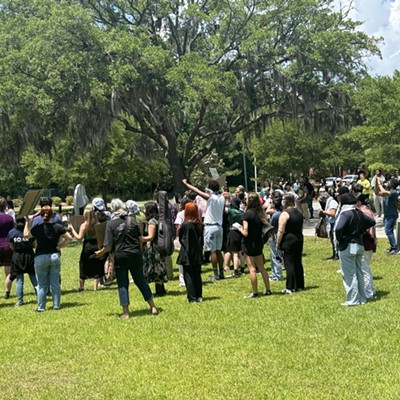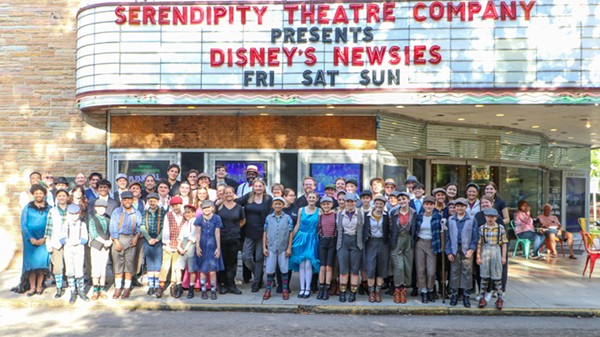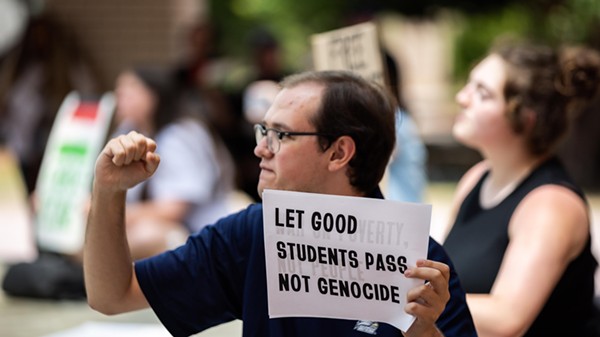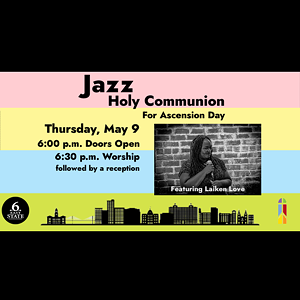Since 1959, when Communist China invaded and occupied Tibet and the Dalai Lama went into exile, the beauty of that country’s Buddhist traditions – both spiritual and cultural – has been without a center.
Not that traditional Tibetan Buddhist arts have disappeared from the planet. Through the work of organizations such as Drepung Loseling Monastery, Inc., the music, dance and culturally-significant ceremonies of Tibet are very much alive, presented and performed all over the world.
Eleven monks from Drepung Loseling – the monastery-in-exile is located in Southern India – will be at the Telfair Museum June 1-7. The opening ceremony includes “sacred music and dance,” and over the week’s residency the monks will construct a mandala, a spiritually-significant “sand painting” of colorful and intricate design, dedicated to the deity Sita Tara.
At week’s end, the monks will ceremoniously destroy the mandala, carry the sand to the Savannah River, and pour it into the current.
Tsepak Rigzin is the assistant program director for Atlanta’s Drepung Loseling Monastery, Inc., the American “home office” for the monastery’s outreach programs.
What’s the significance of the mandala?
Tsepak Rigzin: The mandala symbolizes what you’d call “heaven” for enlightened beings. These, in fact, signify a particular Buddha – male or female – and his or her circle of deities in a whole celestial boat. We believe that this really has a tremendous healing energy.
Sita Tara is a form of enlightened feminine Buddha – you can call it “goddess” in the English sense – and her specific energy has to do with longevity, good health and prosperity. The whole process, from the opening ceremony all the way up to the end, signifies generating, sharing and sending healing energies.
Is there also some significance to doing this in front of people?
Tsepak Rigzin: Absolutely, yes. We believe that the monks who are doing it, and the art itself, and the entire process carry tremendous healing energy, and those who come in contact with this, and view this, we believe they are impacted by good, positive energy. It is a way for everybody to connect.
What’s the history of this particular monastery?
Tsepak Rigzin: Originally, Dreprung Loseling used to be one of the largest monasteries in Tibet, established in 1416 or so. It used to house more than 3,000 monks. In the 1950s Tibet was invaded by Communist Chinese, so the monastery had to be temporarily closed. Although there are still some monks there.
About 250 elderly monks were able to escape and follow his holiness the Dalai Lama into exile in India. And then they slowly were able to re-establish the monastery in South India. Today the monastery in exile has more than 3,000 monks, and the monks on tour come from that monastery.
Tell me why the mandala is destroyed at the end of the week.
Tsepak Rigzin: The principle of dismantling something that the monks have been creating for so many days is to signify or represent Buddha’s teaching called impermanence. We all have this obsessive attachment to something that is beautiful, alluring, enticing, right? So just to let us know and remind ourselves that we live in a transitory world, and everything is impermanent … that’s how we learn to accept what reality is.
When people see it dismantled, you can see and feel that they are awestruck. This, in fact, in the Buddha’s teaching, not only signifies that one is able to understand impermanence, but maybe it helps you understand on a deeper level, “Who am I?” This really relates to that fundamental principle of what we call the selfless “I.” The ego-less “I.”
This is kind of a silly question. When the monks are touring, do they go out in each city to see the sites?
Tsepak Rigzin: It is not a silly question. By exposing our monks to Western culture, while we’re traveling like this, they get to know more. They, too, are learning something about the world.
Are they learning that they made the right decision to avoid this part of the world altogether?
Tsepak Rigzin: No, no. I think it should enhance and strengthen their spiritual values and way of life. And bring more meaning to what they have adapted to, as a being. They are of a different mindset, from a very different cultural background, with a very different mission in their lives. They are all celibate; they have devoted their lives to becoming monks and to live by Buddhist trainings.
‘Mystical Arts of Tibet’
Where: Telfair Museum of Art (Eckberg Atrium), 121 Barnard St.
When: June 1-7
Admission: Free
Phone: (912) 790-8800
Online: Telfair.org
Schedule:
June 1, 6 p.m.: Opening ceremony
June 4, 6 p.m.: Monks lecture
June 7, 1 p.m.: Dismantling and re-distribution of the sand



























